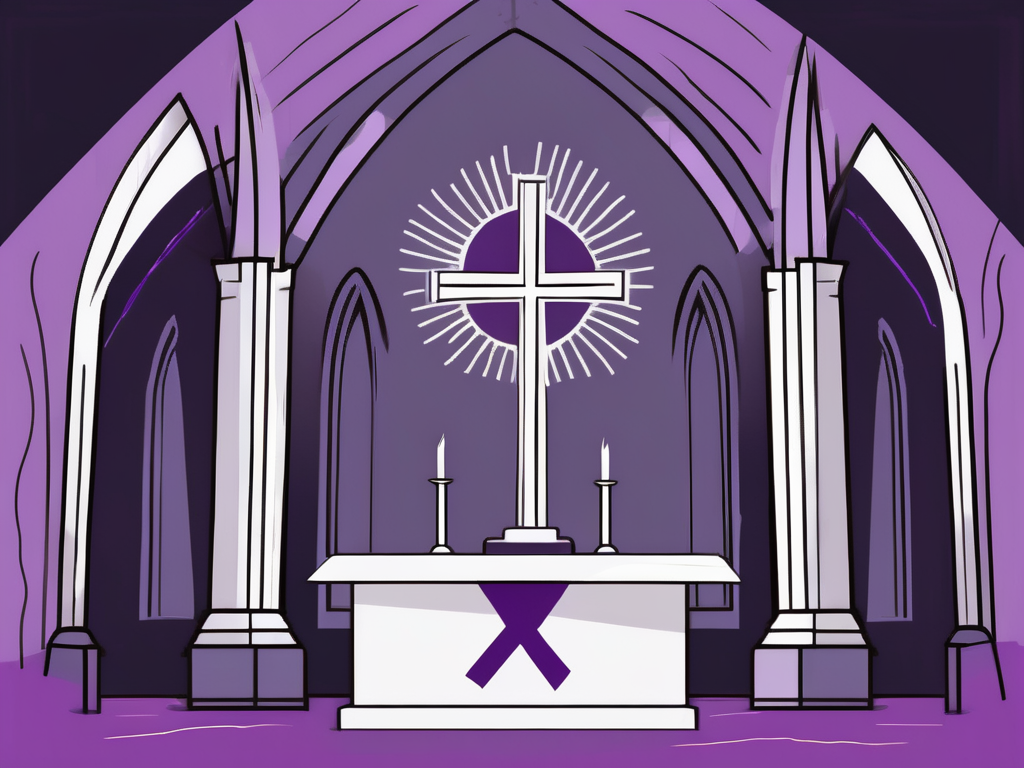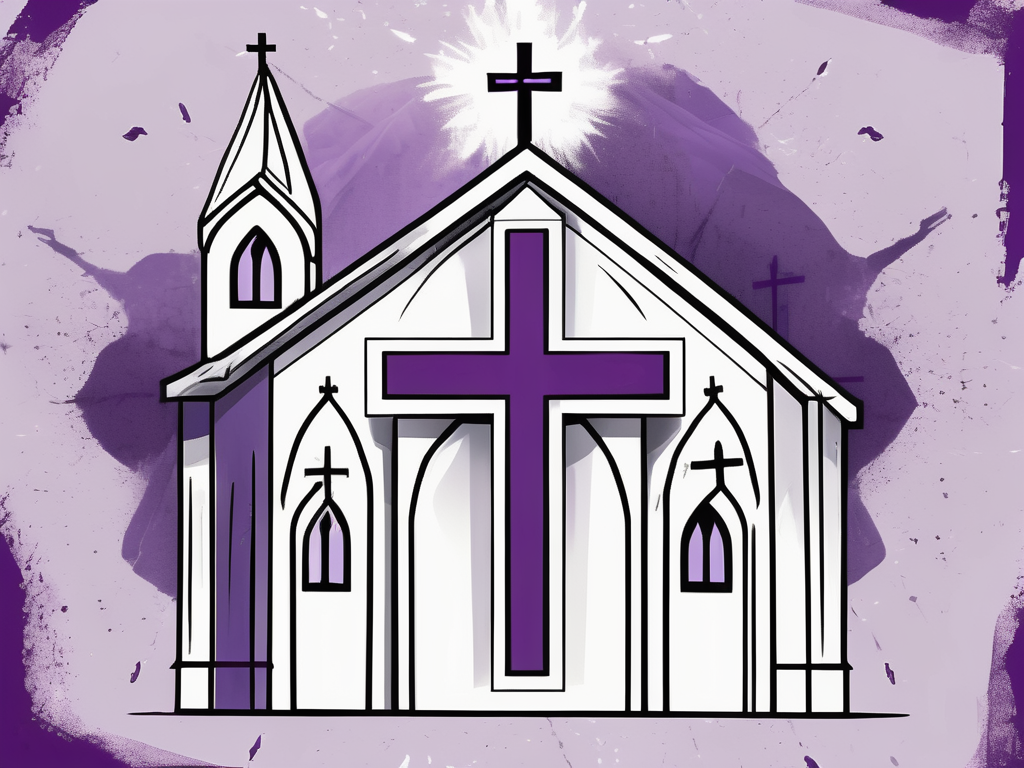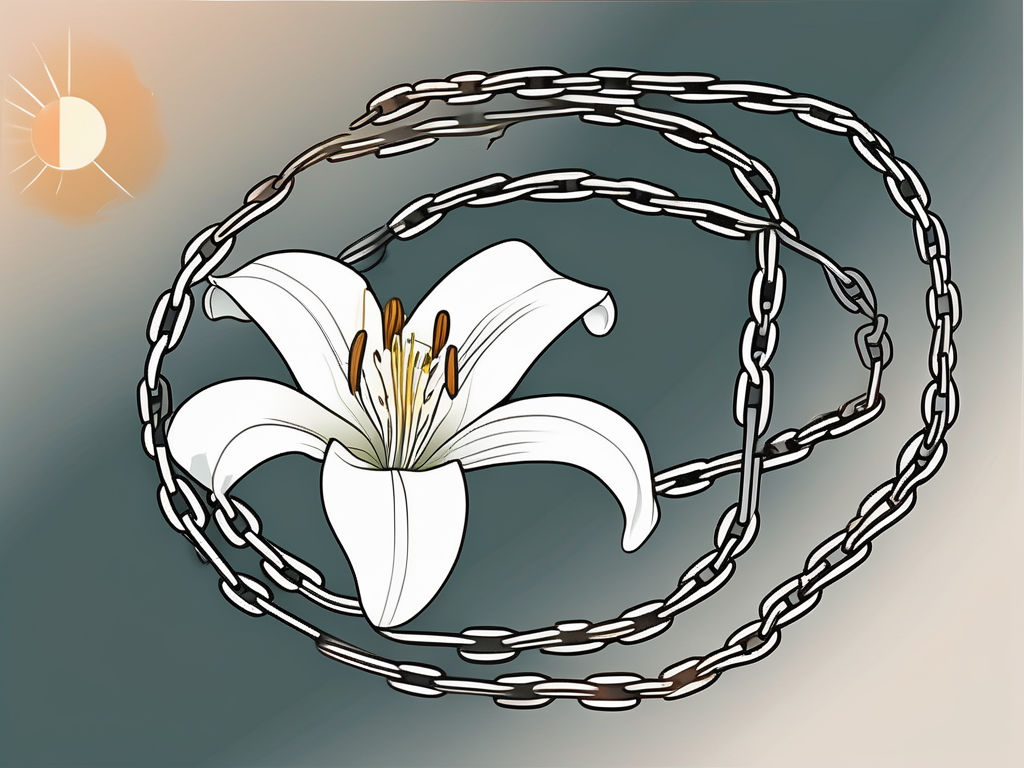Ash Wednesday is a significant day in the Christian calendar that marks the beginning of the Lenten season – a period of reflection and preparation leading up to Easter Sunday. It is a time for believers to focus on repentance, prayer, and self-reflection, as they seek to deepen their relationship with God.
Understanding the Significance of Ash Wednesday
The Biblical Roots of Ash Wednesday
The roots of Ash Wednesday can be traced back to the Old Testament, where ashes were often associated with mourning and repentance. In the book of Daniel, for example, ashes were used as a sign of sorrow and repentance for sins committed.
When the Israelites were in a state of mourning or repentance, they would often cover themselves in ashes as a visible sign of their inward emotions. This act served as a physical representation of their contrition and desire for forgiveness from God.
In the New Testament, ashes are mentioned as a symbol of humility and repentance. In the Gospel of Matthew, Jesus speaks of individuals who would display their repentance by fasting and anointing their heads with ashes.
This practice of anointing oneself with ashes was not only a way to publicly display repentance but also a way to humble oneself before God. By physically applying ashes to their foreheads, individuals acknowledged their need for God’s mercy and forgiveness.
Ash Wednesday’s Role in the Liturgical Calendar
Within Christianity, Ash Wednesday holds great significance in the liturgical calendar. It falls forty days before Easter, excluding Sundays, and is considered a day of fasting and abstinence. This period of forty days symbolizes the forty days Jesus spent fasting in the desert before his ministry.
Ash Wednesday marks the beginning of the season of Lent, a time of reflection, repentance, and preparation for the celebration of Easter. During this period, Christians are encouraged to engage in acts of self-discipline, such as fasting, prayer, and almsgiving, as a way to draw closer to God.
On Ash Wednesday, Christians attend special church services where they receive ashes on their foreheads. The ashes, typically made from burnt palm branches used in the previous year’s Palm Sunday celebration, serve as a reminder of human mortality and the need for repentance.
As the ashes are applied to the forehead, the priest or minister recites the words, “Remember that you are dust, and to dust you shall return.” This solemn reminder of our mortality serves as a call to reflect on the brevity of life and the importance of living in accordance with God’s will.
Throughout the season of Lent, Christians are encouraged to deepen their relationship with God through prayer, self-reflection, and acts of service. It is a time to examine one’s life, seek forgiveness for past wrongs, and strive for spiritual growth.
Ash Wednesday and the season of Lent provide an opportunity for Christians to renew their commitment to living a life of faith and discipleship. It is a time to turn away from sin and embrace the transformative power of God’s love and grace.
The Traditions and Rituals of Ash Wednesday
Ash Wednesday is a significant day in the Christian calendar, marking the beginning of the season of Lent. It is a time of reflection, repentance, and preparation for the celebration of Easter. The traditions and rituals associated with Ash Wednesday hold deep symbolism and meaning for believers.
The Symbolism of Ashes
Receiving ashes on Ash Wednesday is a powerful symbol for Christians. It serves as a visual reminder of human frailty and the brevity of life. The words spoken during the imposition of ashes, “Remember that you are dust, and to dust, you shall return,” emphasize the transient nature of existence and the importance of repentance.
The ashes used on this day are typically made from the burned palm branches from the previous year’s Palm Sunday. This connection to Palm Sunday, which commemorates Jesus’ triumphant entry into Jerusalem, adds another layer of symbolism to the ashes. It reminds believers of the journey from celebration to sacrifice, from joy to sorrow.
The ashes are often applied in the shape of a cross, representing the crucifixion of Jesus and the hope of salvation that comes through his sacrifice. This act of marking the forehead with ashes is a public declaration of faith and a reminder to live a life aligned with the teachings of Christ.
The Practice of Fasting and Abstinence
Fasting and abstinence are two key practices observed by Christians on Ash Wednesday. Fasting involves refraining from food or certain types of food, while abstinence refers to abstaining from something specific, such as meat.
By voluntarily denying themselves of physical pleasures, believers use this time to redirect their focus towards spiritual matters and to reflect on their relationship with God. It is meant to be a time of self-examination, prayer, and seeking forgiveness for past wrongdoings.
Fasting and abstinence are not meant to be acts of punishment but rather acts of devotion and self-discipline. They provide an opportunity to detach from worldly desires and to deepen one’s spiritual connection. Through this practice, Christians seek to emulate Jesus’ forty days of fasting in the wilderness, preparing themselves for the challenges and temptations of life.
Additionally, fasting and abstinence can foster a sense of solidarity with those who suffer from hunger or lack of resources. By experiencing a temporary physical hunger, believers are reminded of the importance of compassion, generosity, and caring for those in need.
It is important to note that fasting and abstinence are not obligatory for all Christians, as different denominations have varying practices and guidelines. However, for those who choose to observe these traditions, they serve as a meaningful and transformative experience.
The Connection Between Ash Wednesday and Lent
Preparing for Easter: The Purpose of Lent
Lent, which begins on Ash Wednesday, is a season of spiritual preparation leading up to the celebration of Easter. It is a time for believers to draw closer to God through acts of self-discipline, contemplation, and prayer.
During Lent, Christians often choose to give up certain indulgences or adopt new spiritual practices to deepen their faith. This period of self-reflection and sacrifice helps individuals to refocus their attention on the ultimate sacrifice of Jesus on the cross.
As believers embark on this journey, they are reminded of the significance of Easter and the resurrection of Jesus Christ. The forty days of Lent symbolize the forty days Jesus spent fasting in the wilderness, facing temptation and preparing for His ministry.
Throughout history, Lent has been a time for believers to examine their lives and make changes that align with their faith. It is a season of renewal, a time to let go of worldly distractions and focus on what truly matters.
Ash Wednesday as the Gateway to Lent
Ash Wednesday holds a unique place in the Lenten journey. It is the starting point, the gateway to a season of renewal and spiritual growth. The ashes received on Ash Wednesday serve as a reminder of human mortality and the importance of repentance throughout the Lenten season.
On this day, believers are encouraged to reflect on their own mortality and their need for God’s grace. It is a time to let go of past mistakes and to strive for a more meaningful relationship with God.
The tradition of receiving ashes on Ash Wednesday dates back centuries. The ashes, typically made from the burned palm branches from the previous year’s Palm Sunday, are a visible sign of repentance and humility. As the ashes are applied to the forehead in the shape of a cross, believers are reminded of their mortality and the need to turn away from sin.
Ash Wednesday also marks the beginning of a period of fasting and abstinence for many Christians. It is a time to simplify one’s life, to detach from material possessions, and to focus on spiritual growth. By giving up certain indulgences, believers are reminded of the sacrifices made by Jesus and are encouraged to live a more disciplined life.
Furthermore, Ash Wednesday serves as a call to community and solidarity. As believers gather to receive the ashes, they are reminded that they are not alone in their journey. They are part of a larger faith community, united in their commitment to grow closer to God during the Lenten season.
Throughout the centuries, Ash Wednesday has remained a significant day for Christians worldwide. It is a day of reflection, repentance, and renewal. It sets the tone for the entire Lenten season, reminding believers of the importance of self-examination, sacrifice, and drawing nearer to God.
Observing Ash Wednesday Around the World
Variations in Ash Wednesday Celebrations
While the core concept of Ash Wednesday remains the same across different Christian denominations and cultures, there are variations in how it is observed around the world. Each denomination and region may have its own unique traditions and customs for observing this significant day.
In some cultures, the ashes are applied in different ways, such as making a cross on the hand instead of the forehead, or using different materials to create the ashes. These variations add richness and diversity to the celebration, while still maintaining the essence of repentance and renewal.
For example, in certain parts of Europe, it is customary for the priest to bless the ashes by mixing them with holy water or incense before applying them to the foreheads of the faithful. This ritual symbolizes the purification of the soul and the desire for spiritual cleansing.
In South America, particularly in countries like Brazil and Argentina, Ash Wednesday is often celebrated with vibrant processions and colorful displays. Participants dress in traditional costumes and carry religious icons, creating a festive atmosphere while still reflecting on the solemnity of the day.
Meanwhile, in some African countries, Ash Wednesday is marked by communal gatherings where people come together to share their personal reflections and prayers. This collective introspection fosters a sense of unity and strengthens the bonds of the community.
Ash Wednesday in Modern Times
As times change, so do the ways in which Ash Wednesday is observed. In recent years, many churches have introduced new approaches to engage the congregation in meaningful experiences on this day.
Social media campaigns, for example, have allowed individuals to share their faith journey during Lent, creating a sense of community and support among believers. Online devotionals, podcasts, and virtual prayer gatherings have become popular alternatives for those unable to attend physical church services.
Furthermore, some churches have incorporated interactive elements into their Ash Wednesday services. This may include interactive prayer stations where people can engage in different forms of prayer and reflection, such as writing down their burdens and leaving them at the foot of a cross or participating in guided meditation exercises.
In addition, many churches now offer opportunities for individuals to receive ashes throughout the day, accommodating those who are unable to attend the traditional morning or evening services. This flexibility allows more people to participate in the observance of Ash Wednesday and experience the symbolic act of receiving ashes as a reminder of their mortality and the need for repentance.
Overall, Ash Wednesday continues to evolve and adapt to the changing needs and preferences of believers around the world. While the core message of repentance and renewal remains constant, the various variations and modern approaches enhance the significance and accessibility of this important day in the Christian calendar.
Common Misconceptions About Ash Wednesday
Clarifying the Purpose of Ash Wednesday
One common misconception about Ash Wednesday is that it is a purely somber and mournful occasion. While repentance and reflection are important aspects, Ash Wednesday is also a hopeful time when Christians focus on the grace and forgiveness offered through Jesus Christ.
It is not a day solely dedicated to wallowing in guilt but rather an invitation to start anew and embrace a deeper spiritual journey.
Debunking Myths About Ash Wednesday Rituals
Another misconception is that the ashes themselves hold some special power. It is essential to understand that the ashes used on Ash Wednesday are symbolic and only carry significance because of the meaning attached to them.
The true power lies in the repentant heart and the desire to turn towards God. The ashes are a tangible reminder of this commitment.
In conclusion, Ash Wednesday is a sacred day for Christians worldwide, symbolizing repentance, humility, and the start of the Lenten season. It is a time of introspection and spiritual growth, where believers seek to draw closer to God and prepare their hearts for the celebration of Easter. Through traditions and rituals such as the imposition of ashes, fasting, and abstinence, believers are reminded of their mortality, the need for repentance, and the redemptive love of Jesus Christ. As the gateway to Lent, Ash Wednesday invites Christians to embark on a journey of self-reflection, renewal, and a deeper connection with God. No matter the time or place, the essence of Ash Wednesday remains the same – a call to embrace God’s grace and walk in faith.












